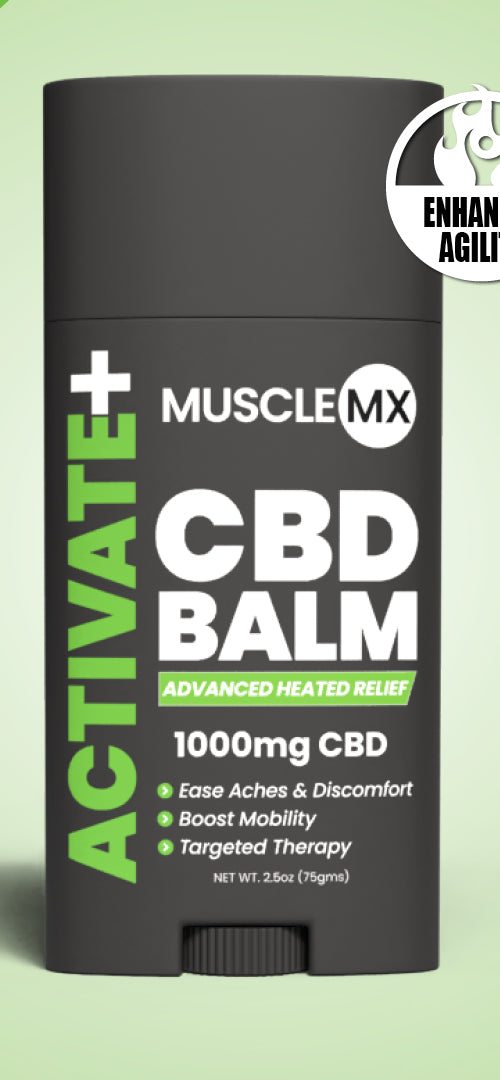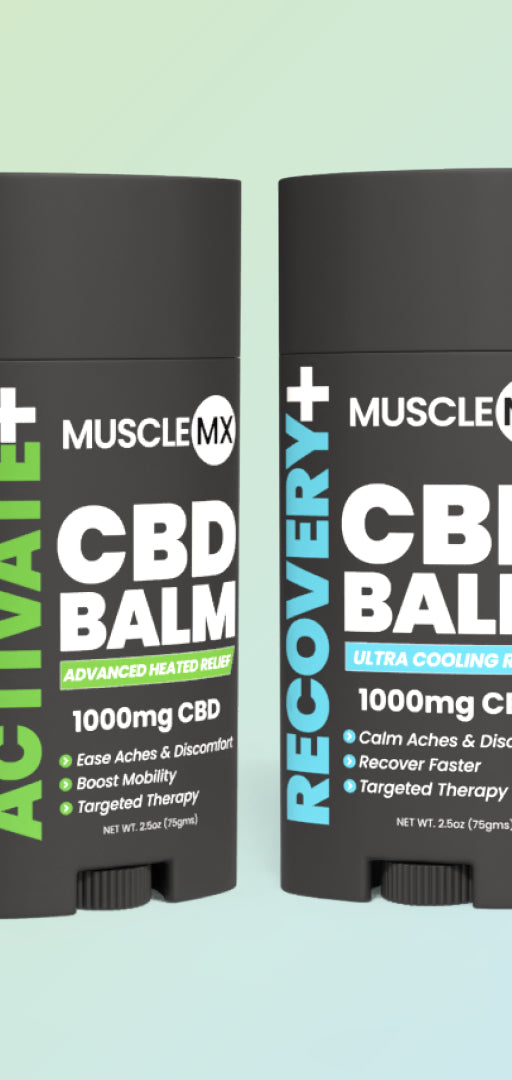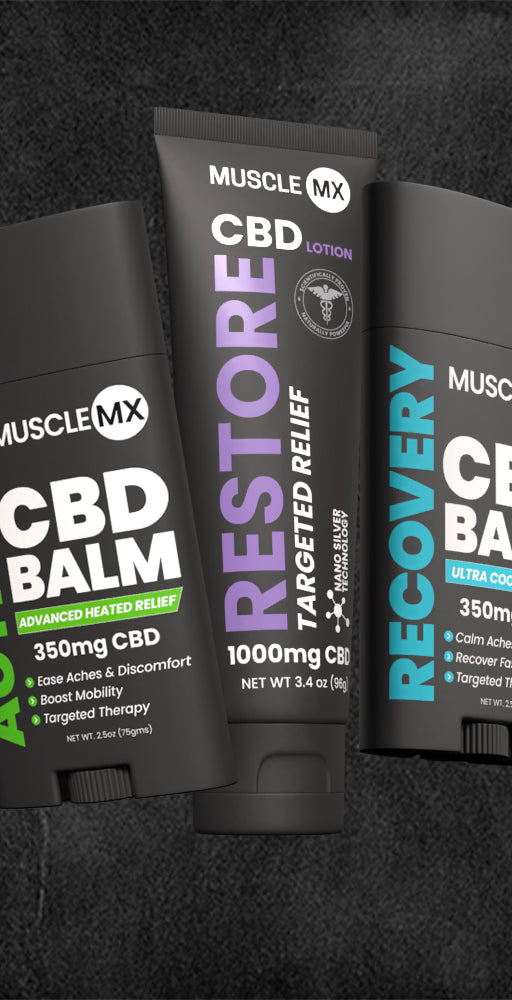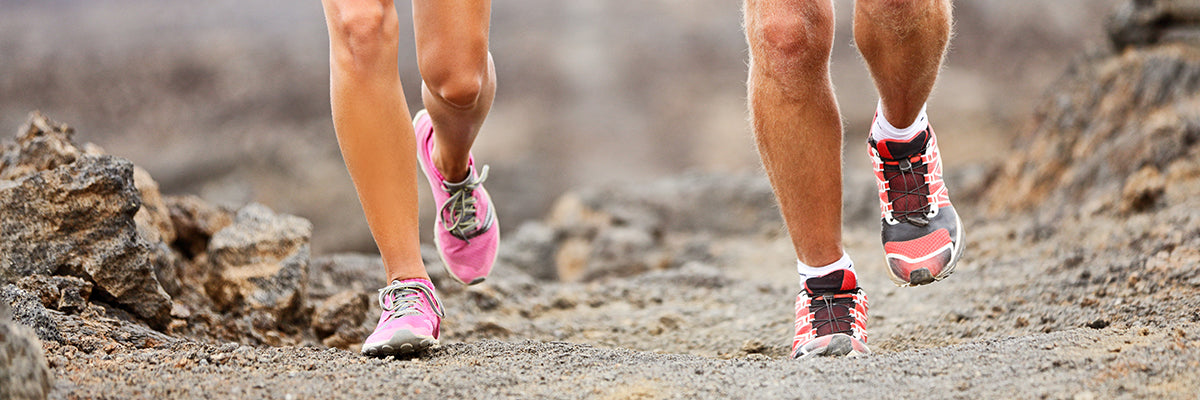Running is one of the simplest yet most effective ways to maintain fitness. All you need is a pair of shoes, an open road, and a desire to move. But while running may seem straightforward, it places significant strain on your feet, making foot care essential to keep your performance high and avoid injuries. Regardless of the type of runner you are, understanding the different types of running, knowing how to select the right footwear, and being aware of common injuries can help you enjoy a more fulfilling running journey. Because with the right knowledge, runners can minimize the risk of injury and maximize their enjoyment on every run.
What are the Different Types of Runs that Runners Do and How are They Able to Do Them?
Runners don’t just stick to one type of run. Different types of runs cater to various fitness levels, goals, and experiences – diversifying their training to build strength, endurance, speed, and flexibility. Let's break down some of the most common running types and how they benefit runners:
-
Base/Short Run: This is a comfortable, easy run usually done at a steady pace. Base runs improve aerobic capacity and get your body used to regular movement without putting too much stress on the muscles or joints. It’s a staple for beginners and casual runners.
-
Long Run: Long runs are essential for those training for distance events. Runners gradually increase their distance to build endurance. These runs are slower but much longer, helping the body adjust to prolonged physical activity.
-
Long-Distance Running: Often confused with long runs, long-distance running focuses on covering significant mileage in a single session. It enhances cardiovascular endurance and mental toughness, usually spanning 10 miles or more. Because it requires significant endurance and mental toughness, proper hydration and nutrition strategies are crucial.
-
Interval Training: Involves alternating between periods of high-intensity running and low-intensity recovery. This type of training increases speed and builds anaerobic fitness, making it perfect for athletes looking to improve their sprinting ability.
-
Tempo Runs: These runs challenge a runner to maintain a pace that's just slightly uncomfortable for an extended period. They are designed to improve your lactate threshold, which helps you sustain faster paces for longer periods without feeling fatigued.
-
Fartlek: A Swedish word for "speed play", Fartlek involves changing speeds at random intervals during a run. Unlike structured interval training, this is more spontaneous, combining aerobic and anaerobic conditioning in a fun, unstructured way.
-
Hill Repeats: Great for building strength in the legs, improving running economy, and increasing endurance. They involve repeated sprints up a hill followed by an easy jog back down for recovery.
-
Recovery Run: A slow, short run typically done after a harder workout to promote muscle recovery by improving blood flow and removing waste products like lactic acid. These runs are crucial for preventing injuries and staying fresh for your next intense workout.
-
Progressive Run: This type of run starts slow and gradually increases in pace, ending at a faster pace than you began. It helps improve endurance, pacing strategy, and mental toughness.
-
Easy Run: Easy runs are done at a slow pace to reduce muscle stress and allow recovery. They are typically used as active rest days and are common in both casual and competitive runners’ routines.
-
Sprint: Sprints are short bursts of maximum effort running, often lasting only 20-30 seconds. Sprints build speed and strength but can also help in fat-burning and cardiovascular fitness.
-
Steady-State Run: A run performed at a consistent pace that is faster than your easy run but slower than your race pace, generally at 70%-80% of their maximum effort. It helps improve endurance and is often done for longer distances – all without the intensity of speed work.
-
Average Pace: The concept of running at an "average pace" is specific to each runner, depending on their goals and fitness level. Training at your average pace helps build consistency and prepares the body for races.
-
Speed & Running Workouts: These involve various forms of high-intensity runs, from sprints to interval training, focused on increasing speed and cardiovascular fitness. These sessions are critical for competitive athletes looking to improve their finishing kicks or personal bests.
-
Mill Repeats: Performed on a treadmill, these runs involve repeated bursts of speed followed by slower-paced recovery periods. The treadmill allows for precise control of speed and incline, making it an excellent tool for structured training.
-
Aerobic Running: Any run that keeps your heart rate in the aerobic zone (around 60%-70% of your maximum heart rate) helps develop endurance. These runs typically last longer but are less intense.
-
Strides: Simply short bursts of fast running, usually around 80-100 meters. They are often done at the end of easy runs to help improve running form and leg turnover speed.
-
Fasted Run: Running on an empty stomach or in a fasted state can help the body adapt to using fat as a fuel source, making it a popular practice among endurance athletes. However, it can be risky if not done correctly, potentially leading to energy crashes or injury.
-
Obstacle Course Racing: These races involve more than just running. Participants face various physical challenges, including climbing, crawling, and jumping, all requiring a different kind of strength and agility compared to road or trail running.
-
5K Run:: The 5K (3.1 miles) is a common race distance for beginners and seasoned runners alike. It’s short enough to test your speed but long enough to challenge your endurance.
-
Half-Marathon: A half-marathon is 13.1 miles, requiring dedicated training for distance, endurance, and pace strategy. These races often serve as stepping stones for those aiming to complete a full marathon.
-
Marathon: The ultimate endurance challenge for many runners, the marathon (26.2 miles) demands months of preparation, discipline, mental fortitude, excellent foot care, and of course, a strategic balance of different run types to prepare for the grueling distance.
Casual vs. Competitive Runners
The distinction between casual and competitive runners is significant, particularly in the types of runs they do, their training intensity, and how they approach injury prevention.
Motivations
Both runners have some identical and unique motivations for wanting to run in the first place.
Casual Runners:
-
Health and Fitness: Many casual runners run to maintain a healthy lifestyle. They prioritize cardiovascular health, weight management, and overall well-being over performance. The primary goal is to get some exercise and enjoy the activity.
-
Stress Relief and Fun: Casual runners often see running as a way to unwind, clear their heads, and enjoy some “me time”. The enjoyment of the experience, whether through the solitude of a run or socializing with a running group, is the central focus.
-
Consistency over Intensity: There’s less concern with speed or distance for casual runners. They might run a few times a week or integrate it with other fitness activities without focusing on pushing limits or achieving specific performance benchmarks.
Competitive Runners:
-
Goal-Oriented: Competitive runners are driven by clear, measurable goals like improving times, winning races, or achieving personal records (PRs). Their motivation is deeply connected to specific targets in races like 5Ks, 10Ks, half marathons, or marathons.
-
Performance Improvement: They focus on aspects like speed, endurance, and efficiency. Training programs are often structured to enhance performance, with speed work, interval training, and strength conditioning as common practices.
-
Event Participation: Competitive runners typically participate in events regularly. Whether aiming to place in their age group, qualify for events like the Boston Marathon, or challenge themselves against others, races are a central motivation.
Training Approach
There are certain ways that these runners go about training.
Casual Runners:
-
Flexibility in Routine: Casual runners often don’t have a strict training schedule. They run when it fits into their day or when they feel like it. There’s no pressure to meet a certain mileage or pace.
-
Less Structured Training: Casual runners usually don’t follow a rigid training plan. Their runs are more intuitive and based on what feels good in the moment. For example, they might run based on how much time they have available or how they’re feeling physically.
-
Comfort First: Avoiding injury and discomfort is a priority. If a casual runner feels tired or sore, they’ll rest rather than push through the pain, as performance isn’t their primary concern.
Competitive Runners:
-
Strict Training Regimen: Competitive runners often follow specific, structured training plans with detailed progression in mileage, speed work, and tapering before races. Training may include intervals, tempo runs, hill work, long-distance runs, and cross-training for strength and mobility.
-
Tracking Metrics: Speed, heart rate, distance, and elevation are meticulously tracked. Many competitive runners use running apps, GPS watches, and heart rate monitors to fine-tune their training and monitor progress.
-
Periodization: Competitive runners may follow a periodized training plan, focusing on building endurance, increasing intensity, tapering for peak performance, and recovering post-race. They meticulously plan their season around key races to ensure they peak at the right times.
Equipment and Gear
Although the most common equipment types can be the same, there are other types of equipment and gear that can vary based upon what the runner is looking to accomplish.
Casual Runners:
-
Basic Gear: Casual runners tend to stick with the basics—comfortable running shoes, lightweight apparel, and possibly a smartphone for tracking their run or listening to music. They may replace gear when it’s worn out but aren’t overly focused on having the latest tech.
-
Focus on Comfort: Casual runners prioritize comfort and ease, often selecting running gear based on personal preference or brand familiarity rather than performance optimization. They may not invest in specialized gear like compression socks, GPS watches, or advanced running shoes unless they believe it enhances comfort.
Competitive Runners:
-
High-Performance Gear: Competitive runners often invest in top-tier running shoes, such as carbon-plated racing shoes, and tech gear that helps them track and enhance performance (e.g., GPS watches with VO2 max tracking, cadence monitors, and performance apparel). Every piece of equipment is chosen with a performance-oriented mindset.
-
Frequent Gear Updates: Since performance depends on gear that functions optimally, competitive runners frequently replace shoes and other items based on mileage and wear rather than comfort alone. They are often knowledgeable about the latest gear and technology to gain any performance edge.
Diet and Nutrition
This plays a good role in how well a runner does and the type of run(s) they want to do.
Casual Runners:
-
Balanced Diet: Casual runners typically follow a balanced diet that supports general health and wellness but may not tailor their nutrition specifically to running performance. They focus on eating wholesome foods that fuel their body for moderate exercise and overall vitality.
-
Hydration and Snacks: Casual runners might take a water bottle on a long run or enjoy a snack post-run, but their approach to hydration and nutrition is generally flexible and unstructured. They eat intuitively without much focus on macronutrient timing.
Competitive Runners:
-
Performance-Driven Nutrition: Competitive runners often follow specific nutrition plans designed to enhance performance and recovery. This includes calculating macronutrient intake, focusing on carbs for fueling long runs, and protein for recovery.
-
Hydration and Supplements: Competitive runners often pay close attention to hydration levels, electrolytes, and recovery supplements. During training cycles, they may use energy gels, drinks, or bars during long runs to optimize their performance and avoid "bonking" (sudden fatigue).
Mindset
Casual and competitive mindsets do differ here quite a bit.
Casual Runners:
-
Relaxed Approach: Casual runners typically take a relaxed approach to their runs, enjoying the activity for its mental and physical benefits without getting overly caught up in specific outcomes. The mindset is often one of enjoying the process rather than achieving perfection.
-
Social Focus: Running can be a social activity for casual runners, and they may run in groups or with friends for fun. Social interaction, exploration, and mental relaxation are often more important than running fast or long.
Competitive Runners:
-
Focus and Determination: Competitive runners often have a laser-focused mindset. They are driven by goals and dedicated to achieving them, even if it requires sacrifice, discomfort, or long hours of training. They thrive on the challenge and continually push their limits.
-
Resilience and Adaptation: Many competitive runners experience setbacks, such as injuries or failed race performances, but they tend to see these as learning opportunities. They may have strategies in place to overcome mental blocks and maintain motivation through hard times.
Event Participation and Goals
This can also differ based upon the runner.
Casual Runners:
-
Fun Runs and Charity Races: Casual runners may participate in local fun runs, charity events, or themed races (such as color runs or mud runs), where the primary goal is enjoyment rather than achieving a specific time.
-
Completion over Competition: For casual runners who enter races, finishing the race is often more important than racing against others or themselves. The distance or participation may be a personal accomplishment rather than a competitive pursuit.
Competitive Runners:
-
Race Performance and Rankings: Competitive runners often participate in events with the goal of setting personal records (PRs) or placing in their age group. They target specific race distances and may have time goals for each race.
-
Qualifying for Elite Races: Some competitive runners aim to qualify for elite races like the Boston Marathon, which requires hitting specific time standards. Participation in major events or championships is often a key motivation for training.
Recovery and Injury Prevention
Effective recovery and injury prevention are essential for long-term success and enjoyment in running. Runners incorporate certain strategies into their routine, in order to enhance their performance, minimize the risk of injury, and ensure a healthier and more sustainable running journey.
Casual Runners:
-
Intuitive Recovery: Casual runners tend to listen to their bodies and take rest days when needed. They may not follow a specific recovery protocol but instead rest when they feel fatigued or sore.
-
Less Concern about Injuries: Since the intensity and frequency of runs are often lower, casual runners tend to experience fewer overuse injuries. If they do get injured, they’re more likely to take an extended break without rushing recovery.
Competitive Runners:
-
Structured Recovery Plans: Competitive runners are proactive about injury prevention, often incorporating recovery techniques such as foam rolling, stretching, mobility work, and strength training to prevent overuse injuries.
-
Monitoring Recovery Metrics: Many competitive runners track their recovery through metrics like heart rate variability (HRV) or resting heart rate to ensure they are recovering properly between training sessions. This helps prevent burnout and ensures optimal performance.
Why Do Runners Sometimes Get Injured?
Injuries are an unfortunate reality of running. Even the most experienced runners can fall victim to common running-related injuries due to overuse, poor technique, inadequate recovery, or wearing the wrong footwear. You see, injuries often result from a combination of factors, including:
-
Overtraining: Pushing your body too hard without allowing adequate rest and recovery can lead to overuse injuries.
-
Improper Footwear: Wearing shoes that don’t suit your foot type or running style can cause pain and long-term damage.
-
Running Surface: Uneven or hard surfaces like concrete increase the impact on your joints and muscles, leading to injuries.
-
Poor Running Form: Incorrect posture, stride, or landing mechanics can place undue stress on specific muscles or joints, increasing the risk of injury.
Many running injuries are related to the biomechanics of the feet and legs. Runners may develop problems due to imbalances in their running form, such as overpronation (foot rolls inward) or supination (foot rolls outward). Without proper support and alignment, these issues can lead to a range of common injuries such as:
-
Plantar Fasciitis: Inflammation of the plantar fascia, a thick band of tissue running along the bottom of your foot, is a common issue among runners. Symptoms include heel pain and stiffness.
-
Shin Splints: Pain along the front of your shin bone, often caused by repetitive stress on the tibia. It’s common in beginner runners or those increasing their intensity too quickly.
-
Runner's Knee: This condition, characterized by pain around the kneecap, occurs due to misalignment or overuse of the knee joint. Patellofemoral pain syndrome, where the kneecap doesn’t track properly, is one of the most common forms.
-
Achilles Tendonitis: Inflammation of the Achilles tendon, often caused by overuse, particularly in runners who increase their mileage or intensity too quickly.
-
Stress Fractures: These small cracks in bones, often in the feet or lower legs, result from repetitive force. They are common in runners who increase their mileage too quickly.
-
IT Band Syndrome: The iliotibial (IT) band runs along the outside of the thigh from the hip to the knee. Overuse can cause it to become tight and inflamed, leading to pain along the outer knee.
-
Ankle Sprains: Running on uneven surfaces increases the risk of twisting or rolling the ankle, causing sprains.
-
Blisters: Friction between your skin and footwear can lead to painful blisters, especially during long runs.
How to Choose the Proper Footwear to Prevent Common Running-Related Injuries
Selecting the right footwear is arguably the most critical aspect of foot care for runners. The proper shoe can make the difference between pain-free running and chronic injury. Here’s how to make the best choice:
-
Understand Your Foot Type: Before purchasing running shoes, you need to know your foot type: neutral, overpronated (rolling inward), or under-pronated (rolling outward). Getting your gait analyzed at a running store can help you identify your foot type, allowing you to select shoes designed for your unique biomechanics.
-
Match Shoes to Your Running Style: Different shoes are designed for different types of runs. For example, if you’re a long-distance runner, you’ll need shoes with extra cushioning for comfort. Sprinters, on the other hand, may prefer lightweight, minimal shoes for better speed and efficiency.
-
Prioritize Comfort and Fit: Comfort is key in running shoes. Ill-fitting shoes can cause blisters, black toenails, and other painful foot issues. Make sure there’s enough room in the toe box for your feet to swell slightly during runs.
-
Replace Shoes Regularly: Running shoes wear out over time, especially if you’re logging a lot of miles. Most shoes need to be replaced every 300-500 miles. Worn-out shoes lose their cushioning and support, increasing the risk of injury.
-
Test the Flexibility: Your running shoes should flex where your foot naturally bends, usually at the ball of the foot. Shoes that are too stiff can lead to plantar fasciitis and other foot problems.
-
Don’t Neglect Arch Support: If you have high arches or flat feet, make sure your shoes provide adequate arch support. Improper support can lead to foot, knee, or even hip pain.
-
Consider the Running Surface: If you frequently run on trails, you’ll need trail shoes with extra grip and stability. Road runners, on the other hand, should look for shoes with more cushioning to absorb the shock of running on hard surfaces.
-
Pay Attention to Shoe Weight: Lighter shoes can help improve speed, but they often provide less cushioning. Consider your running goals and select a shoe that offers the right balance for you.
-
Look for Breathability: Your feet sweat when you run, and proper ventilation can prevent blisters and fungal infections. Look for shoes made from breathable materials to keep your feet cool and dry.
-
Test Them Out: Always try on running shoes before buying, ideally after a run or at the end of the day when your feet are slightly swollen. Make sure to jog around in them to ensure they’re comfortable.
-
Invest in Insoles: If your shoes don’t offer enough support or comfort, consider adding insoles. Custom orthotics or over-the-counter insoles can make a big difference in how your feet feel during and after runs.
-
Listen to Your Feet: If you start experiencing pain or discomfort during runs, don’t ignore it. It could be a sign that your shoes are no longer providing the support you need, or they weren’t the right choice to begin with.
Keep Calm and Run Strong!
Whether you’re a casual runner who enjoys the freedom of running for fitness or a competitive athlete chasing personal records, running has the capacity to improve both mental and physical health, offering something valuable for every type of runner. And that’s why taking care of your feet is essential for any runner, whether you're just starting or have been pounding the pavement for years..
So, remember, foot pain doesn’t have to be part of your running journey. Keep calm, run strong, and invest in your feet—because they carry you to every finish line. And if you need extra support for recovery, check out some helpful products from Muscle MX.










































